In the movie “Princess Mononoke,” a young warrior must save his village from a giant demon that has come rampaging out of the mountain forests. After its death the beast is revealed to be a wild boar god, corrupted by an iron bullet lodged inside it. Later on, an army of boars attack the humans in an attempt to save the forest from their encroachment.
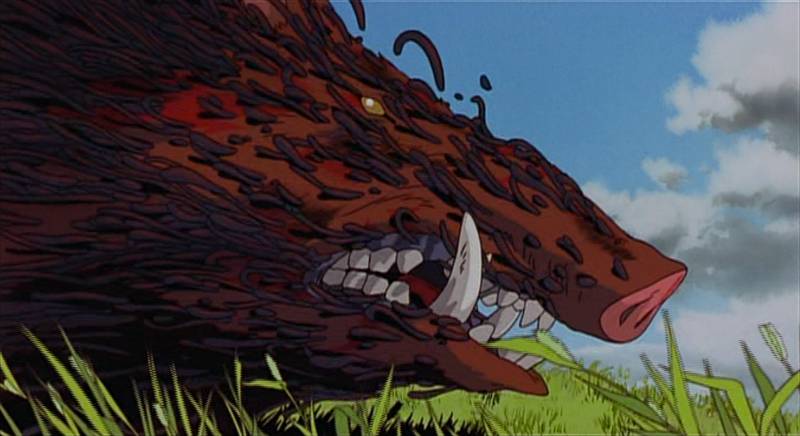
Looking at the actual relationship between humans and boars in Japan, the film resonates all the more. In the last few years there has been an increase in boar-related incidents, such as attacks and the destruction of farmland. In this article I will look at the boar’s place in Japan and the causes of these recent problems.
Cultured Creatures
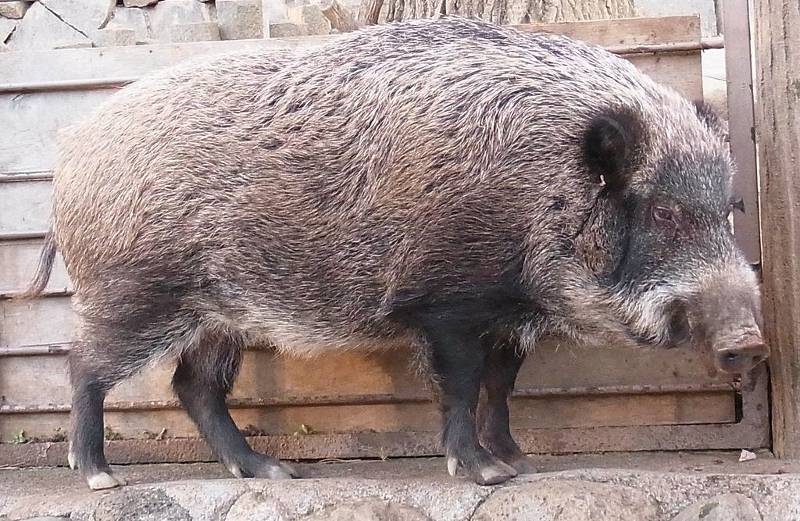
The boar is native to many parts of Eurasia. The Japanese word is inoshishi 猪, though an older nickname is yamakujira (“mountain whale”). The Japanese boar (Sus scrofa leucomystax) is considered a subspecies of wild boar. They are found all over Kyushu, Shikoku, and Honshu, with another subspecies in the Ryukyu Islands.
The boar may not hold as strong an association with Japanese culture as, for example, the crane, dragon, or tanuki, but they have held on to their own little cultural spaces with the tenacity for which they’re known. Boar motifs have been found in pottery from the Jomon period. When Japan adopted the Chinese calendar and zodiac in the seventh century, they altered the twelfth animal from the pig to the wild boar. This made sense as there would be no domestic pigs in Japan for centuries to come. Then again, there were no tigers or dragons either, so it may reflect the importance of the boar to the Japanese people.
Buddhist influence constrained the consumption of meat throughout Japan’s pre-modern history, but on the other hand, boar is pretty tasty. It was not a common meal, but was certainly on the menu from time to time. Still an uncommon food today, I had the chance to try it in Japan once, as a friend’s girlfriend’s dad had shot one, and her mom cooked it up. It was quite good, and I would describe it as tasting somewhere between pork and beef. In the Edo period (1600-1868), people put forward what seems the thinnest of excuses for eating meat by referring to it in floral terms. Venison was called momiji (maple), horse was sakura (cherry blossom), and boar was botan (peony).
At the same time, the boar was associated with another flower. The card game hanafuda developed during the Edo period, latest in a long line of card games adapted from the cards brought by Europeans in the sixteenth century. There are twelve suits (one for each month), each with a particular flower, and some with lines of poems or animals. The suit of the seventh month all have hagi (bush clover) and one of them features a boar as well.
For Naruto fans out there, hanafuda was also the inspiration for the names of Team Asuma. In the game, the boar, deer, and butterfly cards are a strong hand, known as ino-shika-cho. Team Asuma consists of Ino, Shikamaru, and Choji. Like the cards, they work best together.
Boar-n to Be Wild

Both English and Japanese speakers have come up with equally cute names for boar piglets. In English, hunters call them squeakers. In the first year of their life they have stripes running the length of their bodies, so in Japan people sometimes call them uribō “melon boy.”
By the age of 8-15 months, males leave to lead mostly solitary lives, while females usually live in groups called sounders (in English). During mating season, males will travel long distances to find a sounder. Once found they will violently chase off any rivals, a task for which they are well equipped. They can run up to 40 kph. Males can grow 5-10% larger than females and 20-30% heavier. Of course, males also have tusks, but during the breeding season the males form a layer of subcutaneous tissue to protect their organs during fighting. A male sometimes mates with up to 5-10 sows. The female’s gestation period is only a little over four months, and she usually has litters of 4-6, starting the cycle anew. Boars can live 10-14 years, but most only survive to the age of 4-5.
Boars are omnivorous. They eat nuts, berries, seeds, leaves, bark, twigs, and shoots, and dig up roots and tubers. They also eat worms, bugs, fish, shellfish, rodents, bird eggs, snakes, lizards, frogs and carrion. In other words, they aren’t picky porkers.
Boarserkers
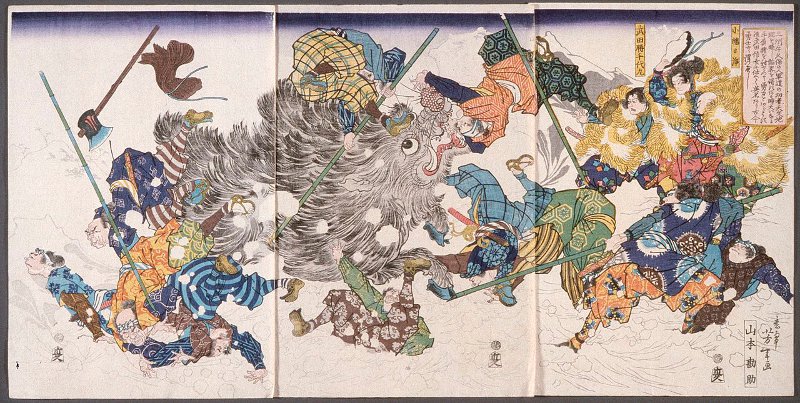
Wild boars have always been a problem for Japanese farmers. They are known to eat crops and damage embankments by digging. In 2005, they were responsible for 26.1 percent of the 18.6 billion yen in crop damages by animals that year, topping the list. Some farmers erect knee-high fences of corrugated plastic or aluminum sheeting to protect their fields. However, this isn’t always effective.
In recent decades, and even more in the most recent one, boar attacks have increased. I was unable to find exact figures on the amount of attacks, so I wouldn’t want to exaggerate the problem, but all of my sources agree that they are on the rise. Let’s take a look at a few example cases:
Kobe, January, 2011: An elderly woman attempted to feed a boar, which bit off her finger. Feeding boars was actually made illegal nine years prior, but the penalties are minor and not well enforced.
Taishi, Hyogo Prefecture, April 6, 2013: Eight people, mostly senior citizens, were injured by a single, large boar. According to local police the animal first bit a woman in her yard, then headed east. Tada Miyuki, 68, was talking with a friend on the street, when she was bowled over by the boar and broke two ribs. “The boar came almost out of nowhere, and before I knew it, it rushed toward me,” she said. Local authorities issued a warning to local residents, and later that day a boar suspected of being the culprit was found as roadkill nearby.
Kobe, June, 2014: Local media responded to sightings of a wild boar that attacked a teenage girl and an elderly man. After knocking down a young woman, the boar then charges the cameraman. He does his best to avoid and fend off the boar, but sustains bites on both legs, requiring stitches. It was later found that the boar had four offspring, and the attacks were probably caused by motherly defensiveness. Authorities later disposed of the mother, with no word on what happened to the young.
Provoking the Piggies
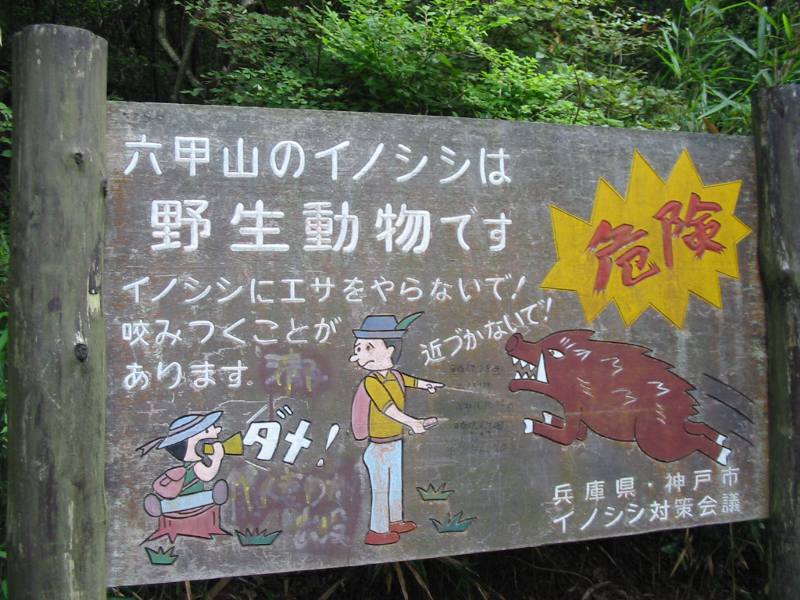
Historically, boars usually kept to the mountains and forests. What then, is the cause of the upturn in boar-on-human violence? The first reason for the increase in attacks is encroachment on boar territory by humans. In the past, most people lived on the plains where farming was easy, but now, with a much higher population, they are entering and developing boar turf more than ever, not so much for farming as for living.
Likewise, the boar population is increasing. Even restrained by Buddhist prohibitions on meat-eating, Japanese people hunted and ate boar more often in the past. Firearms are highly controlled in Japan, and I think it safe to say that demand for game meat decreased in the twentieth century, so hunting has dropped. In addition, climate change has affected the boar population. Warmer winters have seen some boars producing two litters of young per year, rather than one. They also kept further south before because their short legs don’t do well in heavy snow, but with less snow they have been pushing northwards.
A reason that I haven’t seen cited, but have wondered about, is the lack of natural predators. Worldwide, wolves are the primary predator of boars, however, due to the introduction of rabies in the 18th century, encroachment, and overhunting; the last wolves in Japan went extinct in 1905. Not finding the relevant data, I can’t really say if this contributed to boar population growth, but I wonder.
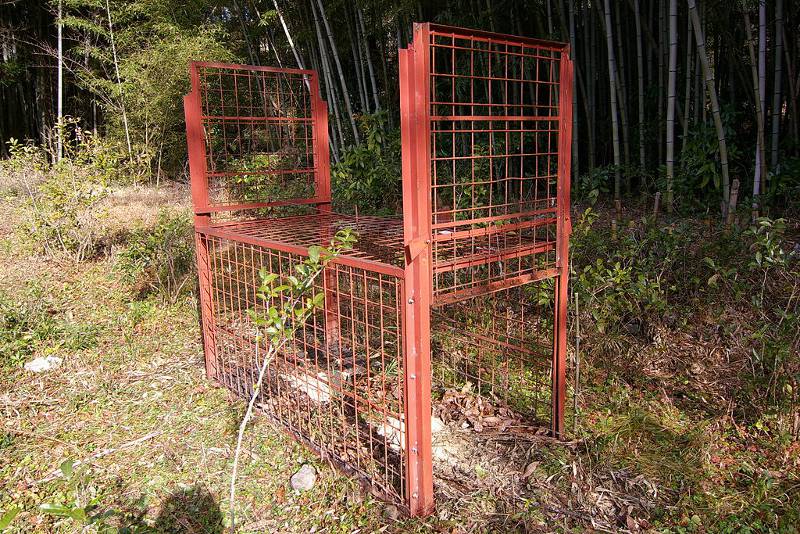
There have been some responses to try and curb boar incidents. Feeding boars is illegal in some areas, but this can only be enforced so well, and boars will eat out of trash anyway. Another strategy would be to encourage more hunting. The overall number of hunters in Japan has fallen by half since the seventies and most of them are senior men. However, the number of women hunters in their 20s and 30s is holding steady, and even growing in Hokkaido. The Ministry of the Environment is actively trying to encourage young hunters to help control booming populations of both boar and deer. Still, it seems unlikely that hunting’s popularity will outstrip the boar reproduction rate anytime soon.
Boars can be dangerous, without a doubt, but they are just doing what they do. The burden lies on humans to find a way to rectify the harm they’ve done by destabilizing the environment in all the ways mentioned earlier. Hopefully, a way to achieve a balanced relationship is found before much more damage is done.
